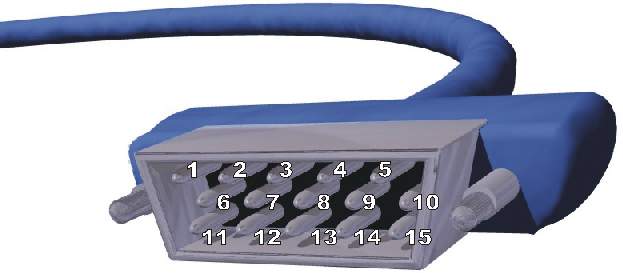

Display
Technology
Displays have come a long way since the blinking green monitors in text-based
computer systems of the 1970s. Just look at the advances made by IBM over the
course of a decade:
|
|
Most displays sold today support the Ultra Extended Graphics Array (UXGA) standard. UXGA can support a palette of up to 16.8 million colors and resolutions of up to 1600 x 1200 pixels, depending on the video memory of the graphics card in your computer. The maximum resolution normally depends on the number of colors displayed. For example, your card might require that you choose between 16.8 million colors at 800 x 600, or 65,536 colors at 1600 x 1200. A typical UXGA adapter takes the digital data sent by application programs, stores it in video random access memory (VRAM) or some equivalent, and uses a digital-to-analog converter (DAC) to convert it to analog data for the display scanning mechanism. Once it is in analog form, the information is sent to the monitor through a VGA cable. See the diagram below:

|
1 = Red out 2 = Green out 3 = Blue out 4 = Monitor ID 2 in 5 = Ground |
6 = Red return 7 = Green return 8 = Blue return 9 = Optional +5V output from graphics adapter 10 = Sync return |
11 = Monitor ID 0 in 12 = Monitor ID 1 in or data from display 13 = Horizontal Sync out 14 = Vertical Sync out (sometimes used as data clock too) 15 = Monitor ID 3 in or data clock |
You can see that a VGA connector like this has three separate lines for the red, green and blue color signals, and two lines for horizontal and vertical sync signals. In a normal television, all of these signals are combined into a single composite video signal. The separation of the signals is one reason why a computer monitor can have so many more pixels than a TV set.
Since today's VGA adapters do not fully support the use of digital monitors, a new standard, DVI (Digital Video Interface) has been designed for this purpose. Because VGA technology requires that the signal be converted from digital to analog for transmission to the monitor, a certain amount of degradation occurs. The use of DVI will keep data in digital form from the computer to the monitor, virtually eliminating signal loss. The DVI specification is based on Silicon Image's Transition Minimized Differential Signaling (TMDS) and provides a high speed digital interface. TMDS takes the signal from the graphics adapter, determines the resolution and refresh rate that the monitor is using and spreads the signal out over the available bandwidth to optimize the data transfer from computer to monitor. DVI is technology independent. Essentially, this means that DVI is going to perform properly with any display and graphics card that is DVI compliant. If you buy a DVI monitor, make sure that you have a video adapter card that can connect to it.